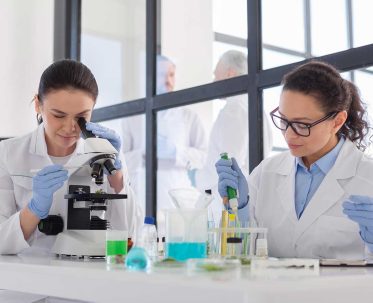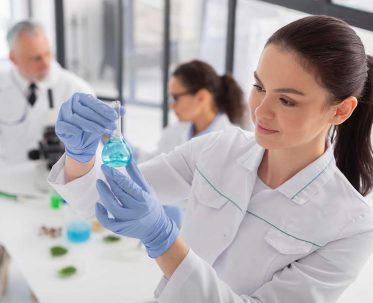Country Best Distribution for Lab Chemicals
We are the leading distributor of high-quality laboratory chemicals, serving researchers, industries, and institutions nationwide. With a commitment to reliability, safety, and efficiency, we provide a comprehensive range of reagents, solvents, and specialty chemicals tailored to your needs. Our streamlined logistics ensure timely delivery, while our expert support team guarantees exceptional service. Trust us to be your partner in advancing science and innovation.
Phenol-Chloroform Extraction:
Column-Based Purification:
If you’re looking for a rewarding career and the chanmake an impact, you’ve come to the right place. we will transform your business through our techniques!
Novalee Spicer – CEO lab director

Magnetic Bead Technology:
Nucleic acids bind to magnetic beads, which are separated using a magnet.
High-throughput, scalable, and automation-friendly.

Salting-Out Method:
Uses high salt concentrations to precipitate proteins, leaving nucleic acids in solution.
Cost-effective and suitable for basic applications.
LCMS Chemical Supplier
We are a trusted supplier of high-purity chemicals and solvents specifically tailored for Liquid Chromatography-Mass Spectrometry (LCMS) applications. Our products, including LCMS-grade solvents, buffers, and standards, are rigorously tested to ensure low background noise, high sensitivity, and reliable performance. Whether for research, clinical, or industrial use, we provide the quality and consistency you need to achieve accurate and reproducible results. Partner with us for all your LCMS chemical needs.
How many steps are involved in DNA/RNA extraction?
DNA/RNA extraction typically involves the following key steps:
Cell Lysis:
Break open cells to release nucleic acids using mechanical, chemical, or enzymatic methods.
Removal of Contaminants:
Separate proteins, lipids, and other cellular debris using phenol-chloroform, proteinase K, or column-based purification.
Nucleic Acid Binding:
Bind DNA/RNA to a silica membrane (column-based) or magnetic beads.
Washing:
Remove impurities with wash buffers to ensure high-purity nucleic acids.
Elution:
Release purified DNA/RNA into a buffer or water for downstream applications.
What is the best extraction method for nucleic acid extraction?
The “best” nucleic acid extraction method depends on your specific needs, such as sample type, required purity, and intended application. Here’s a quick comparison:
Column-Based Purification:
Best for: Routine DNA/RNA extraction from small to medium sample sizes.
Advantages: Fast, user-friendly, and high purity.
Magnetic Bead Technology:
Best for: High-throughput or automated workflows.
Advantages: Scalable, efficient, and minimal hands-on time.
Phenol-Chloroform Extraction:
Best for: High-purity DNA/RNA from complex or challenging samples.
Advantages: Effective but involves hazardous chemicals and more hands-on time.
Salting-Out Method:
Best for: Cost-effective and basic applications.
Advantages: Simple and uses non-toxic reagents.
For most routine applications, column-based purification or magnetic bead methods are widely preferred due to their balance of speed, purity, and ease of use.
For amplicon sequencing, what is the best extraction of nucleic acid?
For amplicon sequencing, the quality and purity of nucleic acids are critical to ensure accurate and reliable results. The column-based purification method is often the best choice due to its ability to yield high-purity DNA/RNA with minimal contamination. Here’s why:
High Purity: Removes inhibitors (e.g., proteins, salts) that can interfere with PCR and sequencing.
Consistency: Provides reproducible results, essential for sequencing accuracy.
Ease of Use: Simple and fast, making it ideal for high-throughput workflows.
Scalability: Suitable for both small and large sample sizes.
Alternatively, magnetic bead-based methods are also excellent for amplicon sequencing, especially for automated or high-throughput setups.
For challenging samples (e.g., soil or fecal samples), combining mechanical lysis with column-based purification can improve yield and quality.
How can I check nucleic acid purity and concentration?
To assess nucleic acid purity and concentration, use the following methods:
UV-Vis Spectrophotometry (NanoDrop):
Concentration: Measure absorbance at 260 nm (A260).
DNA: 1 A260 ≈ 50 µg/mL
RNA: 1 A260 ≈ 40 µg/mL
Purity: Check ratios:
A260/A280: ~1.8 (DNA) or ~2.0 (RNA) indicates pure nucleic acids.
A260/A230: >2.0 indicates minimal contamination (e.g., salts or organics).
Fluorometry (Qubit):
Uses fluorescent dyes specific to DNA or RNA for highly accurate concentration measurements, even in low-concentration samples.
Agarose Gel Electrophoresis:
Visualize nucleic acids to check integrity (e.g., sharp bands for DNA or clear rRNA bands for RNA).
Bioanalyzer or TapeStation:
Provides detailed information on concentration, size distribution, and integrity.
For best results, combine spectrophotometry/fluorometry with gel electrophoresis or Bioanalyzer for a comprehensive assessment.


